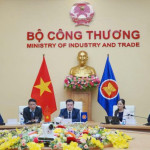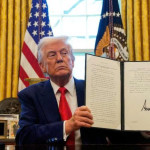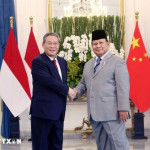Total number of posts 461.
In terms of bilateral relations, EU and India signed the Cooperation and Partnership Agreement in 1994. Nevertheless, negotiations on official free trade agreements (FTAs), started in 2007, have been subject to challenges. Indian workers’ difficulty in accessing EU’s job market, together with high tariffs imposed on liquors and cars imported from EU have been notable contributors to such a rocky journey. Most recently, it was India’s cancellation of meeting with EU’s chief negotiator scheduled in August 2015, a gesture to protest EU’s ban on 700 generic drugs from India based on alleged manipulation during their clinical trials.
However, EU has been recently expressing special interest in the Indo-Pacific region, especially in India. Contrary to past summits with Indian Prime Minister that only saw the participation from EU’s chief executive and Chairman, all 27 Leaders of EU Member countries join the virtual summit on May 8 with Indian Prime Minister Modi.
In their Joint Statement released after the summit, both sides noted that this is a “pivotal moment since the first India-EU Summit in 2000”. In such spirit, the two economies agreed to enhance cooperation in the areas of: Building global health preparedness and resilience–COVID-19 and beyond; Protecting our planet and fostering green growth; Fostering inclusive growth through trade, connectivity and technology; Striving for a safer, prosperous and more democratic world.
Regarding trade, EU and India “agreed to resume negotiations for a balanced, ambitious, comprehensive and mutually beneficial trade agreement which would respond to the current challenges”. Besides FTA, two sides decided to hold separate negotiations on investment protection and geographical indications, leaving open the option for integration into the trade agreement, depending on pace of negotiations.
Meanwhile, the bloc and India launched the Connectivity Partnership, aiming to facilitate large-scale private investments in sustainable connectivity in terms of digital, energy, transport and people-to-people connection, with focus on third countries and regions such as Africa, Central Asia and the Indo-Pacific.
According to statistics from the European Commission (EC), Eu is India’s third largest trading partner with almost €63bn worth of trade in goods in 2020, equivalent to 11.1% of total Indian trade, just after China and the US. On the other hand, India is EU’s tenth largest trading partner, accounting for 1.8% of EU’s total trade in 2020, after China, the US and the UK. Bilateral trade and investment activities appear to be blooming in the last decade. For instance, Trade in goods between the EU and India increased by 72%, whilst The EU's share in foreign investment inflows to India more than doubled from 8% to 18% during the period.
Sources: Nikkei Asia, AP, Reuters, FT, LiveMint, EC














